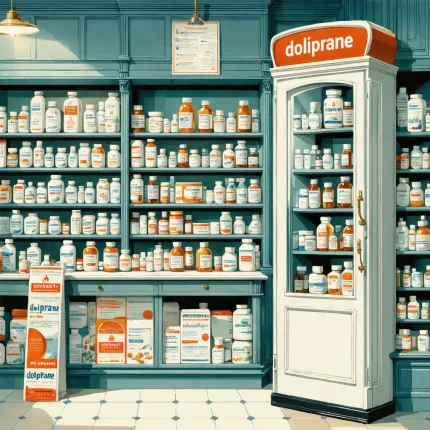Penis Health: Cultural and Medical Views: Penis health discussions bridge cultural taboos and care.

Imagine a conversation where the word “penis” isn’t met with awkward silence or sly chuckles but with open, informed dialogue. For many, this remains a distant ideal. Despite being a central part of male anatomy, the penis often dwells in the shadows of cultural taboos, leaving vital health discussions in the dark. Whether it’s the fascination with penes grandes in popular culture, the medical terminology like pênis and pénis used across different languages, or the sometimes controversial use of penis images in education and media, the topic is complex, layered, and deeply personal.
Why does the penis, a body part so essential biologically and symbolically, remain so wrapped in stigma? And more importantly, how does this affect men’s health? For a topic so straightforward at first glance, the social and medical narratives surrounding penis health are anything but simple. This article delves into the crossroads where cultural perceptions meet clinical realities, exploring how embracing open conversations can break the silence that endangers wellness.
Unearthing the Silence: Cultural Perspectives on Penis Health
Let’s start by acknowledging the elephant in the room: the penis is often a subject shrouded in discomfort. Across societies, talking about it openly can be taboo, even shameful. In some cultures, the mere mention of the word penis might trigger embarrassment or censorship. This hesitance often stems from deep-rooted ideas about masculinity, sexuality, and privacy. For instance, the obsession with penes grandes—whether in myths, media, or personal anxieties—reflects a cultural fixation that can distort self-image and distract from genuine health concerns.
Interestingly, the way the penis is named and perceived varies widely. In Portuguese, it’s pênis; in French, pénis; and in English, simply penis. But behind these slight linguistic differences lie diverse cultural attitudes. In some regions, the penis is a symbol of virility and power, while in others, it may be considered a private organ, seldom discussed outside medical contexts. This cultural ambivalence shapes how men approach their own health, often leaving them hesitant to seek advice or treatment.
How Cultural Taboos Impact Medical Care
The silence surrounding penis health isn’t just a social inconvenience—it has real consequences. Men may avoid talking about symptoms like erectile dysfunction, pain, or unusual changes due to embarrassment or fear of judgment. Without clear conversations, issues that could be early signs of serious conditions go unchecked. Medical professionals frequently report that patients delay consultations because they feel their concerns won’t be taken seriously or will be met with discomfort.
Moreover, the availability and use of penis images in educational materials can either help normalize anatomy and health or, conversely, reinforce stigma if presented inappropriately. When done with sensitivity and accuracy, visual aids empower men to understand their bodies better. But when these images are sensationalized or used without context, they can deepen insecurities and misinformation.
Bridging the Gap: Towards Open, Compassionate Penis Health Discussions
What if we flipped the script? What if talking about the penis was as natural and straightforward as discussing any other health topic? Imagine a world where penes grandes are not a source of unnecessary pressure or myth but simply one variation among many normal forms. Picture medical consultations where men feel comfortable discussing their concerns without shame, guided by healthcare providers who treat the penis with the respect and care it deserves.
- Encouraging education that includes diverse and realistic penis images to promote body positivity and awareness.
- Creating safe spaces—both online and offline—for men to share experiences and questions without judgment.
- Training healthcare professionals to approach penis health holistically, considering cultural backgrounds and personal sensitivities.
By recognizing the cultural layers affecting penis health, we can dismantle barriers to care. This means not only addressing physical symptoms but also navigating psychological and emotional aspects tied to identity and masculinity. Such comprehensive care can improve outcomes and foster a healthier relationship with one’s body.
In the sections that follow, we’ll explore how medical science approaches penis health, the role of culture in shaping attitudes, and practical steps to encourage open dialogue. Whether you’re someone looking to understand your own body better, a partner seeking to support a loved one, or a healthcare provider aiming to bridge gaps in communication, this exploration offers insights to empower and inform.
Because when it comes to penis health, silence isn’t golden—it’s a barrier. Let’s start talking.

Penis Health: Exploring Cultural and Medical Perspectives
What Are the Common Medical Concerns Regarding Penis Health?
The penis, as a vital organ in male reproductive and urinary systems, is subject to various health concerns that can affect overall well-being. Common medical issues include erectile dysfunction, infections like balanitis, Peyronie's disease (curvature of the penis), and penile cancer. Maintaining penis health is crucial not only for sexual function but also for psychological and emotional health.
Medical professionals emphasize regular hygiene, safe sexual practices, and early consultation if abnormalities arise. For example, studies show that around 30 million men globally suffer from erectile dysfunction, highlighting the importance of addressing these issues openly and promptly.
How Do Cultural Attitudes Impact Penis Health Discussions?
Penis health is often surrounded by cultural taboos and stigma that hinder open conversation. In many societies, discussing the penis (referred to as pênis in Portuguese, pénis in French, and commonly as penes grandes when referring to size in Spanish) is considered embarrassing or inappropriate, which can delay seeking medical advice.
However, some cultures approach penis health more openly. For example, indigenous communities may have traditional practices emphasizing penile care and rituals that promote awareness from an early age. Contrastingly, in more conservative cultures, misconceptions about penis size or function can lead to unnecessary anxiety or risky behaviors.
Why Is It Important to Bridge Cultural Taboos Around Penis Health?
Breaking down cultural barriers is essential to improve health outcomes. Men who feel comfortable discussing their penis health with healthcare providers are more likely to receive timely diagnosis and treatment. This openness also helps dispel myths related to penis size, such as the obsession over penes grandes, which may not correlate with sexual satisfaction or health.
Educational campaigns that include accurate information and respectful language—incorporating terms like penis, pênis, and pénis—help normalize these conversations. Visual aids such as medically accurate penis images can further enhance understanding and reduce stigma.
What Role Do Penis Images Play in Education and Health Awareness?
Penis images, when used appropriately, are powerful tools for health education. They provide visual clarity about anatomy, variations in size and shape, and signs of medical conditions. Health professionals use these images to:
- Demonstrate normal versus abnormal anatomical features
- Explain procedures or treatments like circumcision or corrective surgery
- Encourage self-examination for lumps, sores, or unusual changes
Visual resources help counter misinformation and can empower men to take proactive steps toward their genital health.
How Can Men Maintain Optimal Penis Health?
Maintaining penis health involves a combination of lifestyle choices, hygiene, and medical care. Key recommendations include:
- Practicing safe sex and using protection to prevent sexually transmitted infections (STIs)
- Maintaining good personal hygiene, including regular cleaning of the genital area
- Avoiding harmful substances like tobacco and excessive alcohol, which can impair blood flow
- Managing chronic conditions like diabetes and hypertension that affect sexual function
- Seeking medical advice promptly if experiencing symptoms such as pain, swelling, or unusual discharge
Regular check-ups with a healthcare provider can ensure early detection and treatment of any issues.
Are There Psychological Aspects Linked to Penis Health and Cultural Views?
Yes, psychological factors play a significant role. Cultural pressures regarding penis size and performance can lead to anxiety, low self-esteem, or body image issues. For instance, the obsession with penes grandes often perpetuated by media and pornography can create unrealistic expectations and dissatisfaction.
Addressing these concerns calls for holistic approaches combining medical advice, psychological counseling, and cultural sensitivity. Educating men about the wide natural variation in penis size and function helps foster a healthier self-image.
What Are Some Real-Life Examples or Case Studies That Highlight These Issues?
One notable case is a public health campaign in Brazil that used the term pênis openly to discuss sexual health, significantly increasing STI testing rates among men. Similarly, in France, educational materials incorporating the term pénis and detailed penis images helped reduce misinformation about penile cancer symptoms.
These examples demonstrate that culturally sensitive language and visual tools can successfully bridge taboos and improve care.
Summary
Penis health is a vital aspect of men's overall well-being that intersects deeply with cultural attitudes and medical understanding. By acknowledging and addressing cultural taboos, providing accurate and accessible information—including the use of penis images—and promoting open dialogue, we can foster better health outcomes. Recognizing terms like penis, penes grandes, pênis, and pénis within these discussions enriches the global conversation and respects cultural diversity.




